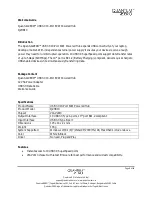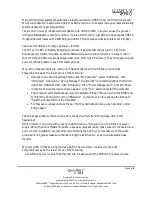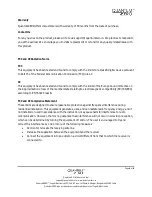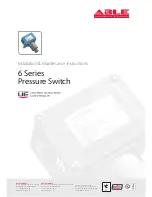
Page 2 of 6
Questions? We’re here to help!
support@quantumzero.in | www.quantumzero.in
QuantumZERO™, Yugadi Electronics, 353, 2nd B Cross, 1st Phase, Girinagar, Bangalore 560085, India
QuantumZERO logo is trademark or registered trademark of Yugadi Electronics
A BC 1.2 (Battery Charging) compliant port delivers fast charge (up to 1.5A), while
simultaneously transferring data, to USB enabled devices when the computer is in sleep mode
or shut off.
Compact design, sturdy built saves space, extend portability; smooth mirrored surface finish
Data transfer rate up to 5 Gbps (640MBps) (actual rates depend on device and computer USB
host controller)
External power supply ensures your devices receive enough power they need for uninterrupted
operation.
Built-in surge protector keep your devices safe
Backward compatible with USB 2.0 Hi-Speed devices (rates up to 480Mbps), and USB 1.1
Full/Low Speed devices (rates 12/1.5 Mbps)
Plug and play (individual devices / USB 3.0 host controller may require drivers), supports hot
swap
Installation Guide
Connect the USB hub to power outlet using the power adapter.
Connect the USB hub to the computer using the USB 3.0 Type B cable.
You may now connect USB devices to the hub.
FAQs
Will the current requirement of my devices influence QuantumZERO™ hub's performance?
For maximum performance, connected devices should not exceed the combined current of the
output of hub – 10A. Otherwise, output current may become unstable or disconnect entirely. Some
commonly used devices' general requirements: 250G Hard drive – 600mA, 4G Flash drive – 100mA,
64G SSD – 400mA, 100M Network adapter – 500mA, Keyboards and mice and other peripheral
devices – 100mA (or less)
The ratings above are estimates only; please check your specific device's actual ratings.
Why am I experiencing slower data transfer rate than 5Gbps?
The USB 3.0 transfer rate is 5Gbps. Several variables could affect the USB transfer rate - device and
USB host controller and file type. To achieve maximum speed computer system, peripherals, cables
and software must all support USB 3.0. With all the reasonable usage environments considered USB
3.0 can achieve average transfer speeds about 3 times faster than that of USB 2.0.
To achieve USB 3.0 speeds, you must have a USB 3.0 controller in your laptop or desktop, with
available ports. The USB 3.0 standard specifies that port connectors will be blue, so it’s easy to
identify them.
























